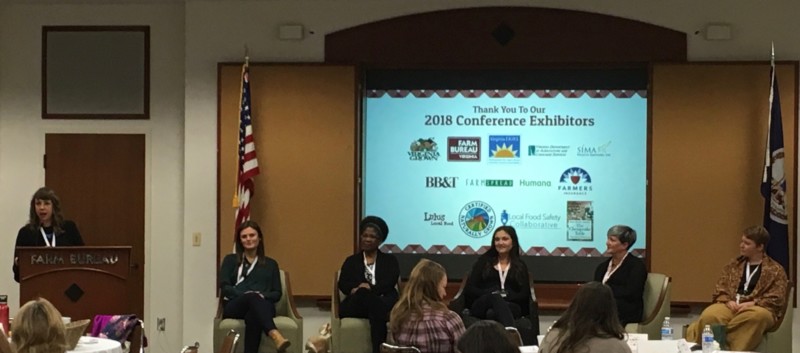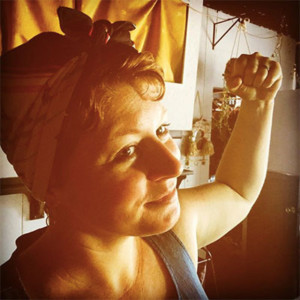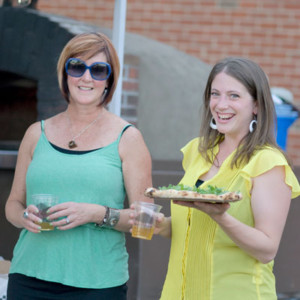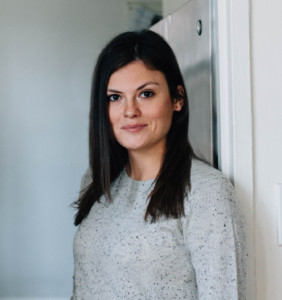
Influencers Panel at the Virginia Farmers Market Conference
Strategies & Tips for Engaging Influencers on a Shoestring
Notes from the 2018 Virginia Farmers Market Conference compiled by Mary Delicate
With the growth of social media – Instagram in particular – influencer marketing has exploded in popularity. It’s not a new tactic, advertisers have been paying celebrities to endorse their products for years. However, now companies are devoting more resources to reach potential customers via influential bloggers and social media personalities.
The number one reason? It’s effective. People are more likely to trust and remember a product endorsed by their favorite foodie over traditional advertising.
For many people, following an influencer on Instagram can feel like following a friend. If a trusted friend were to say “hey I go to this farmers market, it’s amazing, check it out” you probably would.
Influencers create very actionable, highly targeted posts and they can share specific audience demographics and analytics with advertisers. Farmers markets do not have to be left out of influencer marketing despite low or no budget for sponsored posts.
There are strategies for connecting with influencers who have a passion for local food, small farms, handmade products and seasonal eating. To uncover these strategies, we went directly to the experts – the influencers themselves.
For the 2018 Virginia Farmers Market Conference, VAFMA collaborated with Elizabeth Stark of Brooklyn Supper to create a session on influencer marketing. As a blogger and food influencer herself, Elizabeth brought together an insightful panel to discuss influencer marketing and farmers markets.
Her questions sussed out relevant and practical information that market managers could put to use immediately. We’ve pulled out some of the highlights below.
Engaging Influencers on a Shoestring
Virginia Farmers Market Conference, November 2, 2018
Moderator: Elizabeth Stark of Brooklyn Supper
Panelists:
Renee Catacalos, The Chesapeake Table
Chef Sariann Lehrer of The Broken Tulip Restaurant
Christine Lucaciu, Huckle & Goose
Brittany Mullins, Eating Bird Food
Barb Upchurch of The Apple Cart
Who is an Influencer?
When discussing influencer marketing, strategists are typically referring to bloggers and social media personalities. During this VAFMA Conference session we also talked about connecting with food writers and chefs as well.
The Power of Influencers
Elizabeth Stark of Brooklyn Supper shared some of the reasons marketers like working with social media influencers. Influencers:
— Have built trust among their followers
— Provide endorsements, recipe development, photography and videography
— Have impact similar to a highly targeted media publication
— Produce very actionable promotions
— Have access to specific analytics and audience demographics
Value of Influencer Posts
It’s important to understand that many influencers make their living with their blogs and social media. One of the participants said her rates start at $1,500 and go up from there. That is not to say that influencers won’t work without a paid relationship for organizations and causes they truly love. But it’s important to understand the value of these relationships.
If you have people already posting about your market, recognize the impact this earned media can have for your market. Like and comment on the post. Direct message the influencer and ask to share it. Follow their account and interact with them. Build a relationship. Companies with marketing teams and big budgets are paying a lot of money for something you just got for free. Recognize that and build on it.
If a reporter wrote a positive article about your market, would you share it? Some influencers have a more significant reach with your target audience than magazines do.
They Love Your Vendors Too
Brittany Mullins of Eating Bird Food shares about her farmers market visits on Instagram stories. She has relationships with many of the vendors and shares about them with her followers.
For example, she has been promoting Reginald’s Peanut Butter for 5 or 6 years. Owner Andrew Broocker doesn’t pay her for this exposure. Of course, he has given her lots of peanut butter which she thinks is amazing. They’ve talked about one day collaborating to create an Eating Bird Food peanut butter.
Approaching a Social Media Influencer
It’s acceptable to make your first contact through social media but our panelists said they prefer to then move the conversation to email. Email is good for introductions.
When reaching out, pinpoint the mutual benefit for both parties. Don’t approach them with a “here’s what you can do for me” attitude. Think about what value you can offer them. Could you feature them in your customer newsletter for example?
On Instagram, always ask influencers for permission to regram their photos. It is appreciated and a great way to start engaging with them.
“Don’t Be Afraid to Ask”
Before Sarianne Lehrer of The Broken Tulip Restaurant became a chef, she was a blogger. She and a friend started a Game of Thrones food blog right before the TV series started.
They sent a Live Journal message to author George Martin saying “if you ever want to create a cookbook for the show, we’re your girls.”
Three days later they were in negotiations to create a cookbook. Six months later the document was due. Six months after that it was published! So, don’t be afraid to ask.
Approaching Food Writers
Journalists are always on the look out for stories. However, it’s very important for you to get a good understanding of what they actually consider to be a story. You want to be careful not to bombard them with items that they don’t consider news. You are developing relationships with journalists by giving them stories that they actually want to print.
There is a process that you need to put into place to make free press happen. It’s worth doing and worth learning about. The Apple Cart teaches classes on this topic.
Host a Media Event
One method Barb Upchurch and Stephanie Ganz of The Apple Cart use to introduce food writers and other influencers to new producers and products is to host a media event.
They invite them to sample the food and have some drinks. They also create a nice staging area with good lighting so that the guests can take photos of the food.
An event like this could give influencers an opportunity to connect with your vendors, taste their food and see what your market is all about.
Engaging with Food Writers via Social Media
- Food writers follow influential social media foodies too and may find a story through them. An influencer’s post on a new vendor at your market may inspire a writer to feature the vendor in an article.
- Engage with food writers and reporters via social media (especially Twitter). If they are writing something interesting to you, comment on it and share it.
- Start conversations around coverage or media on topics that you might like to be contacted about in the future. It puts you in a position of being seen as someone who is following issues and who might be a good resource on the topic.
- You could start conversations on the issues that the farmers in your area are facing for example.
- Help people get past the beautiful photo as an entrée into discussing “How did that great food get here?”
- Use hashtags to have a conversation. (Farmers market hashtags)
The Power of Metrics
Renee Catacalos, author of The Chesapeake Table, looks for metrics that show the impact of markets in our region. She uses hashtags (like #farmersmarketweek) to search for agricultural and farmers market statistics.
She found VAFMA’s metrics very interesting and said that having those on a state or regionwide level would be even more useful in her work.
She said “the Richmond pilot with the metrics was really amazing and the kind of thing I would definitely repost or share.”
Learn how to collect and share metrics about your farmers market through VAFMA’s Metrics Program (in partnership with the Farmers Market Coalition)
Connecting with Local Food Chefs
- Talk to the chefs in your area who are using local ingredients. Perhaps they would be willing to do a chef at market demo that might help promote their restaurant as well as showing customers how to make seasonal dishes.
- A local food restaurant can be a shop window for what’s being sold at the farmers market. Share their posts to show customers what to do with the food that’s available at the market.
- One of the vexing problems for consumers looking to eat local is not knowing if a restaurant is truly sourcing food from local farms. When you see or hear a farmer corroborating that a restaurant uses their products, share that information. It’s valuable news for your customers.
- Farmers markets can help the local food community by pointing out the restaurants that are truly buying from local farms.
- “Every dish of food we put on Instagram has the farmers linked in it. We’ve created connections with farmers through social media.” — Sarianne Lehrer of The Broken Tulip Restaurant
A Gentler Approach
Instead of being preachy about eating local food, Christine Lucaciu of Huckle & Goose takes a gentler approach. The Huckle & Goose website is infused with beautiful photos and gentle guidance about eating with the season.
Their subscribers get meal plans that teach them how to cook with what’s in season. It has worked – they’ve been able to guide people into shopping at farmers markets.
Their upcoming book – The Huckle and Goose Method — is the book form of how to go from not shopping at your farmers market to making it a regular part of your life.
Connecting on Instagram
Farmers markets are very Instagram-friendly with beautiful food, art and smiling faces. Imagine if you ran an insurance company and had to come up with pretty images. That would be much harder!
Instagram is a good place to engage with your audience. People aren’t engaging as frequently on blogs anymore. You can build likability and trust through your posts and refer people back to your website and blog.
Instagram Tips
- Recognize posts about your market. If an Instagrammer tags your market, comment on the post and direct message them asking if you can regram their post. Always credit the source of the photo and post.
- Leave genuine comments on posts and stories of influencers with whom you want to connect.
- Instagrammers only get 100 notifications at a time. This means influencers who get 2000 likes on a single post are probably not going to see when you @mention them. The best way to connect with them is to comment on their post, respond to their story or direct message them.
- Use hashtags to find people who are posting about the topics that are relevant to your market. Hashtags help loop people into what you’re doing – they are a way to continue a conversation. (Hashtags for Virginia’s farmers markets)
- Set up a specific hashtag for your farmers market. Encourage vendors and visitors to use the hashtag. Check the hashtag before sharing it to make sure it’s not being used by someone else.
- Secure a location geo tag for your market so that people can find you.
- Try to be consistent with the frequency of your posts. If you haven’t updated in a while, people may think you are out of business.
- Come up with a posting schedule and plan time to engage with people for 20 minutes after you post. Social media platforms want you engaging on the platform and that effort is rewarded.
- The engagement you get in the first hour or so is an indicator Instagram uses to decide if your content is worthy of showing to more people.
- Like and comment on posts from people in your feed and from people who use your hashtag.
- Post at peak engagement times – typically in the evening and early morning. Look at the Insights tab on your account. It will tell you when your audience is using Instagram. Also, think about when people would most likely be making plans to go to the market and post at those times.
- Best tip for taking good smart phone photos — Clean your lens!
The Virginia Farmers Market Association is dedicated to supporting farmers markets. One of the ways we do that is by educating farmers market managers. If you’re interested in taking your market to the next level, consider our Market Manager Certification Course (starts Jan 25, 2019) or our Farmers Market Metrics Program (starts February 6, 2019)






